Review for Princess Jellyfish: Deluxe Collector's Edition
The Pre-Review Rant
I knew that one day Kazé’s UPOP policy on their DVDs would push me over the edge. I just never thought that it would be this title. Correction, I never wanted it to be this title. I couldn’t care less about titles like Bleach, or Planzet, but when it’s a show that I have an interest in, I find that I want that release to be perfect or as close to perfect as possible. That doesn’t happen with Princess Jellyfish.
Actually the warning bells rang even before I got the check discs. I read a review or two of the Region A Blu-ray DVD combo from Funimation, and they advised English dub fans to watch the DVD version instead of the Blu-ray, as Jiji’s voice was so low in the mix that you need subtitles on to make out what she is saying. The Region A Blu-ray is UPOP-ed (User Prohibited OPerations), you can’t turn the subtitles on for the English audio, but you can do so with the Region 1 DVD. Kazé’s DVDs are all UPOP-ed, and in a way that makes Blu-ray locking look like a simple latch on the gate. Sure enough, when I tried out an episode in English, Jiji’s voice was inaudible, and no subtitles were accessible to help make out what she says.
But I’m an original language fan. This shouldn’t bother me, except that Kazé have made a user unfriendly choice with the subtitles and signs for the show. They apparently have a policy of only allowing one line of subtitles on screen at a time. If there is on screen text that has to be translated, you’ll see the translation as long as none of the characters speak. Character dialogue has priority for the subtitles with the Japanese track. This is a contemporary show about otaku in Japan. You can bet that there is a whole lot of onscreen text that needs translating, and much of it doesn’t get translated for the Japanese audio. However, most of it, but not all, gets translated for the signs only track that accompanies the English dub, the one where you can’t hear Jiji’s voice.
As an example in episode 2, there’s a handwritten sign over a bath at one point that is a plot specific bit of text. It doesn’t get translated in the Japanese version as someone is speaking at that moment, and their subtitles take precedence (Seriously, everyone else can show subtitles and captions simultaneously!), and I wanted to know what that sign said. Normally I’d skip back and press the subtitle button, but Kazé discs UPOP that option away from me. On other UPOP discs, I’d press the menu button from playback, hop back to the main menu, change audio, and press the menu button to resume playback. Kazé discs do not allow this and you have to start the episode again from the beginning. Fine, I thought, I know where I left the episode, and I’ll just enter the time code and go directly to that point. Kazé discs do not even allow this. You have to scan and skip forwards through the episode until you find that point.
Every time a sign came up without a translation, I had to go through that rigmarole to find out what was said, before going back. I can imagine someone trying to fathom Jiji’s English dialogue to be just as harried. It took me two hours to watch the first two 22-minute episodes of Princess Jellyfish, and that was the straw that broke the camel’s back. For the purposes of this review, and my sanity, I am now watching Princess Jellyfish without UPOPs. Don’t tell me to watch something and then effectively blindfold me before I can watch it! This is supposed to be fun, a waste of time, not more stressful than a rectal exam. Anyway, on with the review, along with the knowledge that I’m not really reviewing the discs that you’ll be buying. But hey! You get a cuddly toy!
Introduction
£49.99 RRP for Princess Jellyfish! That’s eleven episodes across 3 DVDs from Kazé Entertainment via Manga in the UK. I had to check the calendar to see that it wasn’t 2005. Having said that, Princess Jellyfish is as niche as they come, it’s not going to appeal to the same broad audience that pounce on Naruto releases, and in Japan it’s categorised as ‘josei’, for women. That isn’t a heavily subscribed demographic in the West even now. The majority of anime released here is for the young teen male audience, skewing older with select titles. Young girls also get a look in, with magical girl anime and the like, but shows appealing to adults are rare, with fewer shows for women available than for men. You can begin to see why a distributor would like to ensure that they get their money’s worth from such a niche license. Still... that price point. On the other hand, you do get a cuddly toy out of it.
Princess Jellyfish is about otaku, female otaku. Indeed women can be just as obsessive about trivial passions as men, can be just as fervent when it comes to collecting, and just as withdrawn and unable to engage with society. Tsukimi was told by her mother that she would grow up to be a princess, but instead she grew up to be a freak. She obsesses about jellyfish, the same jellyfish that she used to see when her mother took her to an aquarium, and while she moved to Tokyo to work as an illustrator, she spends most of her unemployed free time illustrating jellyfish. She lives in the ‘Nunnery’, the Amamizu-kan apartment block with a group of similarly isolated women, and they call themselves the Sisterhood. The apartment block is run by Chieko, who has a passion for dolls and dolls’ clothing. Mayaya is a tall brash girl who spends her time in a tracksuit obsessing about the Romance of the Three Kingdoms. Banba is a short girl hidden beneath an excessive afro who loves trains, and Jiji is a shy, mousy girl who likes movies and especially older men. Hidden away behind locked doors is the never seen, nocturnal Ms Mejiro, who as a mangaka specialising in boys’ love stories, is the only really productive member of the group.
The Sisterhood have a hard time fitting into society, shy away from the more attractive and outgoing people and have one rule for their lifestyle... No men allowed. Then one day Tsukimi pays a visit to the local aquarium to see her favourite jellyfish Clara, only to find they have put another jellyfish in the tank, a different species that will prove inimical to Clara. She’d point that out to the owner of the shop, but the guy behind the counter is too cute to talk too. Flustered and unable to communicate, she’s about to be in the middle of a regrettable scene, when a princess comes to her rescue. A beautiful girl, the sort of beauty that the Sisterhood shy away from and shun, rescues her, and saves Clara as well. Only this princess is pushy enough to invite herself over, and what’s more spend the night. The kind of girl that can petrify a female otaku is bad enough, but with the next morning comes a greater shock. The princess is actually a prince. Kuranosuke loves to cross dress, and Tsukimi has just broken the Sisterhood’s cardinal rule...
Eleven episodes of Princess Jellyfish are presented across three single layer discs.
Disc 1
1. Sex and the Sisterhood
2. Sukiyaki Western Matsusaka
3. Enchanted
4. I’ll See You In My Aquarium
Disc 2
5. I Want to Be a Jellyfish
6. Night of the Living Sisterhood
7. Jubaku – Spellbound and Stone Broke
8. Million Dollar Babies
Disc 3
9. Midnight Pureboy
10. Days of Love and Lukewarm Water
11. Jellyfish of Dreams
Picture
Princess Jellyfish has one thing going for it on these discs, and that’s the 1.78:1 anamorphic visual transfer. Kazé give it the native PAL treatment, with the 4% PAL speedup that implies. The animation is smooth, clear, and without artefacts other than a smidge of digital banding. The image quality is sharp, with strong colours and bold lines. If there is one positive to be found in reducing the on disc extras to the minimum, and spreading the episodes across three discs, it’s the lack of compression artefacts and the impressive quality of the transfer. That said, there is a problem with the final episode of the collection, where the pans and scrolls revert to the jerkiness of a less accomplished transfer.
Princess Jellyfish has something of a unique look to it when it comes to its visual style. Recognisably anime, it still eschews the usual character design ethic when it comes to its main characters, it colour palette is a little more selective, going for the gentler shades, and there is a stylised two-dimensional feel to the animation that gives it a rather more comic book feel, with bolder outlines and solid blocks of colour. Against that is a greater degree of freedom and energy in the animation itself, which is actually livelier than the usual anime. While the show concentrates mostly on the comedy of the situation, and the parody of its otaku caricatures, it can also find moments of depth and magic which transcend its design style.
Sound
You have the choice between DD 2.0 Surround English and Japanese, with player forced translated subtitles for the Japanese track, and a player forced captions track for the English audio. I went with, and was very happy with the Japanese audio, especially with Kana Hanazawa as Tsukimi. The dialogue is clear throughout and the subtitles are timed accurately. Princess Jellyfish isn’t a show heavy on action, but there are moments of ambience which come across well. The English dub, from what I sampled was acceptable, although with the proviso that some of the actors try to emulate the Japanese performances a little too closely.
I’ve already ranted about the problems with this release, but to summarise... Jiji’s English dub voice is of a very low volume, and subtitles to help remedy that aren’t accessible on these UPOP-ed discs. Also, most of the screen text that gets translated, only gets translated for the subtitle captions that accompany the English dub, and some plot specific elements will be missed completely if you watch the Japanese audio. Incidentally, this show was released by Funimation in the US, and as for most of their releases, Funimation’s English dub was a 5.1 Surround mix. What you get on these discs from Kazé is a downmix.
Extras
You have a choice between English and French menus when you insert the discs, and the French menus autoplay with a trailer for KZ-TV. For once, French purchasers have it even worse than UK shoppers, as there’s no French dub for this show, and the French subtitles have the same missing caption problem as the English ones, with no option of a signs only track to alleviate that.
All three discs get animated menus, but the show’s extras are all on disc 3.
The Princess Jellyfish Heroes are four short animations, and accepting the word of the disc menu options, I’m assuming they run to 6 minutes each. These are additional stories that further explore the supporting characters, with Mayaya, Banba & Jiji, Chieko, and Shu-shu & Hanamori all getting some more time in the limelight.
Jellyfish Safari are short and funny promo animations for the show, and last 30 seconds each. And that’s your lot.
And here’s what you miss out on. I don’t know about the US release, but I find it strange that there are no next episode previews on these discs, and given what happened with Kazé’s first Bleach release, it’s possible that they chose to omit them. One thing that Funimation does do is provide translated subtitles for the theme songs, but you won’t find any on these discs.
In the US, Princess Jellyfish was released on a Blu-ray DVD combo with four discs (2 Blu, 2 DVD), and it has the Princess Jellyfish Heroes and Jellyfish Safari shorts.
It also has a 20 minute featurette that sees two of the Japanese voice actresses visit a Jellyfish Aquarium, some text production notes that looks at the characters, and offer a guide to Jellyfish. There are audio commentaries from the Funimation cast for episodes 1 & 11, and there are promo videos and the textless credit sequences.
Like I said, you get none of that here. But you do get a cuddly toy! The pack comes with a plush toy Clara (Tsukimi’s pet jellyfish). It almost makes me glad that the high street DVD emporium is dead, as this is decidedly an adult anime (in terms of story), and the potential of a little kid, toy jellyfish, cartoon confluence could lead to much disappointment.
Conclusion
Princess Jellyfish is one of the better shows to be released of late, although how Kazé have chosen to release it is wholly disappointing. More of that later. It’s one of those referential shows that appeals to, and affectionately ribs the otaku culture that so embraces, and indeed single-handedly supports the anime industry in Japan. I’ve have previously said that creating an otaku-centric show is like dicing with death. Get it wrong and you can alienate your fanbase. Welcome to the NHK was one show that threw caution to the wind, and presented a harsh representation of otaku, but worked because it was so resonant and true to life with its audience. Genshiken on the other hand was a warmer, gentler comedy, one which only occasionally looked at the drawbacks of the otaku lifestyle. Princess Jellyfish is warmer even than that, with an affectionate take on the obsessive collector that is easy to appreciate, and doesn’t bite too deeply.
The residents of Amamizu-kan are obsessive certainly, fervent collectors, and detached from society, but they are harmless, and more importantly, they do no harm to themselves, and most importantly of all, have a sense of community, warmth, and friendship among themselves. The comedy comes from seeing them confronted with society, and unable to handle it, retreating to what they know best. But what makes Princess Jellyfish greater than this, and makes it a richer experience than Genshiken or Welcome to the NHK, is that it isn’t just about the otaku. It’s also about the other side of society, the Stylish that are liable to petrify any of the sisterhood on sight. The cool, smart-set of society abound, and Kuranosuke at first glance appears to be their epitome. She’s beautiful, elegant, immaculately dressed and made-up, but she interacts with Tsukimi, which blows Tsukimi’s theories of Sisterhood and Stylish segregation out of the water. It only gets more complicated when it turns out that Kuranosuke is a man.
We get politics thrown in as well. Kuranosuke comes from one of Japan’s most prominent political dynasties (his uncle is Prime Minister), while he is a product of his father’s indiscretion. Were he not a boy, he would have stayed with and been raised by his mother, but as a boy he’s a potential successor to the family name, even though his older half-brother Shu is on the fast track to political service. Kuranosuke doesn’t want to be a politician, which is why he cross-dresses. He loves fashion and make-up anyway, and if it can get him out of his father’s sights, he’ll do it. Not exactly conventional himself, he eschews the shallow friendship of his peers, only to be ensnared by this passionate, obsessed, and introverted girl he meets one night outside the aquarium. And soon it isn’t just Tsukimi that obsesses him, he also finds much to appreciate about her friends, even though they are petrified at his presence, and he has to conceal the truth about his gender from them.
On top of that, Princess Jellyfish is a love story, with Tsukimi’s childhood dream of becoming a princess at the heart of it. She’s taken with Kuranosuke’s brother Shu, although he sees nothing but the otaku. That’s until Kuranosuke indulges his obsession for fashion, and gives everyone at Amamizu-kan, including Tsukimi a make-over. From that point, Shu becomes smitten with After-Tsukimi, although he thinks she’s a totally different person from the normal Tsukimi. Tsukimi’s self-confidence isn’t high at the best of times, and this doesn’t help any. To make matters more complicated, Kuranosuke starts developing feelings for Tsukimi himself.
And there’s more. It turns out that the whole area is being redeveloped into a hotel, and Amamizu-kan is top of the demolition list, with Chieko’s mother being pressured to sell. Now the residents have to save their home as well, and for otaku to get motivated, and more importantly involved is not an easy thing. It falls to Kuranosuke to come up with a plan. The developer turns out to be an unprincipled woman named Inari, and when she learns that Shu is a scion of a political dynasty, she’ll get him by hook or by crook, which only makes things harder for Tsukimi, who’s quick to jump to self-defeating conclusions at the best of times.
As you can guess, there is a whole lot going on in Princess Jellyfish, and it’s a show that satisfies the need for decent narrative, appealing characters, and warm and gentle comedy. It’s a nicely paced comedy drama with just the right level of soap opera to keep you wanting more, and it is one of the better shows to have been released in recent years.
But you wouldn’t guess it from the way Kazé have treated it. Forget the fact that their release leaves out most of the extras of the US release. It isn’t that long ago that the UK would miss out on those anyway as a matter of course. It’s that it fails on the basics. No next episode previews, and no subtitles for the songs. Worse, it has the majority of the text caption translations locked into the English dub stream, and while the Japanese audio gets translated subtitles, the on screen text is only translated when no one on screen is speaking. Even in my de-UPOP-ed viewing, I got tired of skipping back and cycling through the subtitle streams. If I watched these discs the way that Kazé intended, I would have given up long before. This is one of the rare occasions that the way that Kazé presents the show actually diminishes the viewing experience.
I still come back to that price point though. £49.99 is excessive in my opinion for these discs. In the US, where Princess Jellyfish got the premium treatment in terms of packaging and content, you get the show, with the same extras as this collection, plus added featurettes, promos and commentaries, on a Blu-ray DVD combo for an RRP of $69.98. At an Aug 2012 exchange rate, that converts to £44.27. But... You do get a cuddly toy!
Princess Jellyfish is a great series, and it’s one that deserves to be on every shelf. I want it on DVD, and I want it even more on PAL DVD. Just not this one... I’m crossing my fingers and hoping that an Australian distributor announces a license in the next few months, or I’ll just bite the bullet and get the US release, even if the Region A Blu-ray component will be dead to me. The low mark most certainly isn’t for the show!
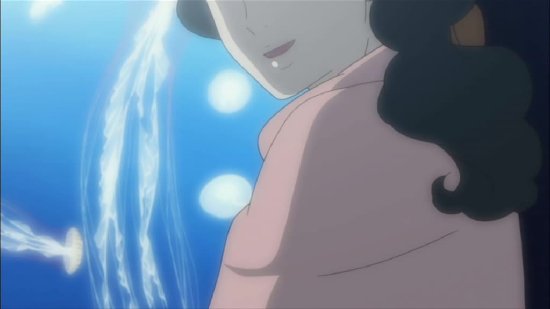
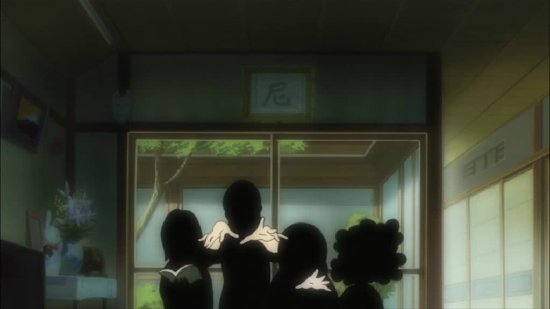
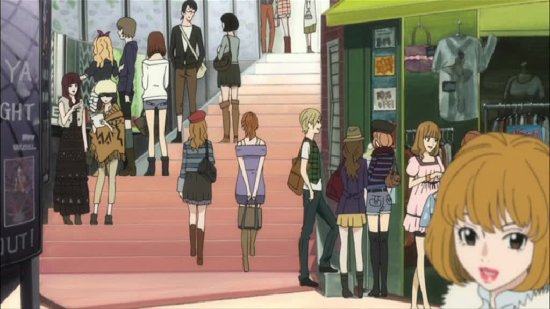
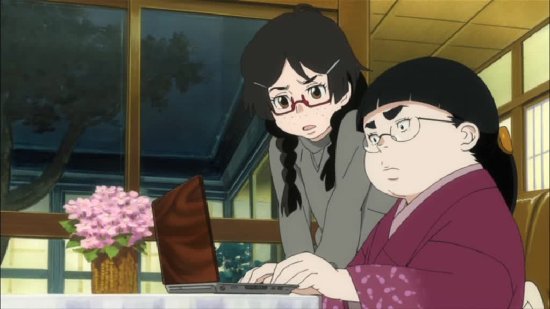
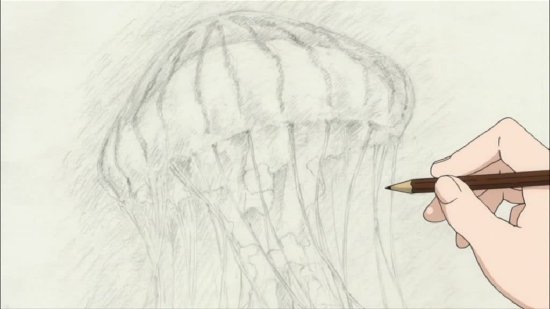
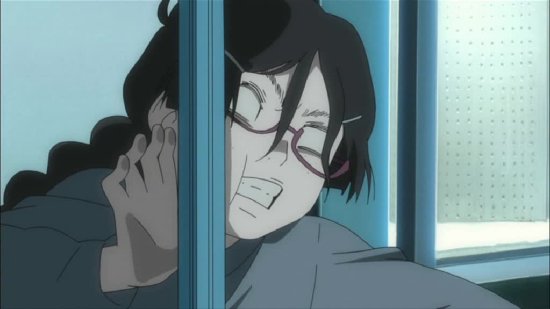
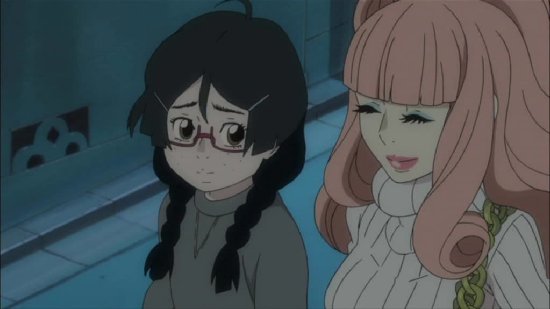
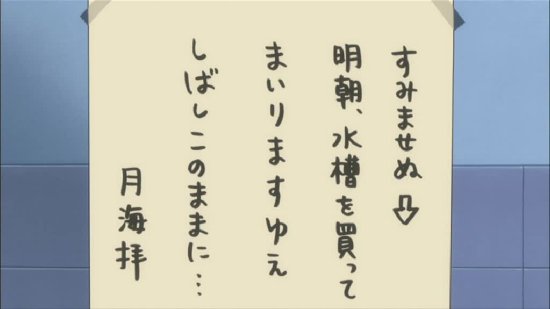
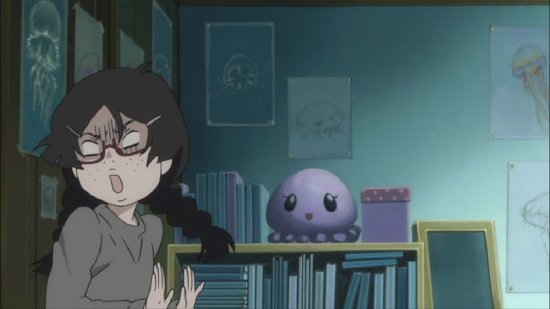
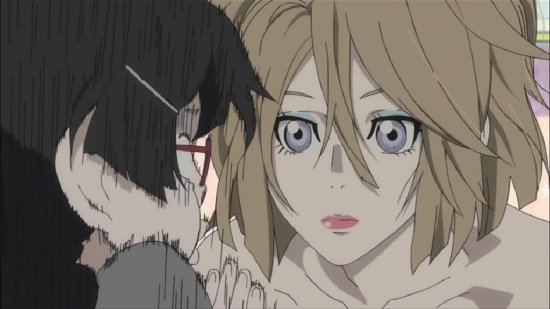
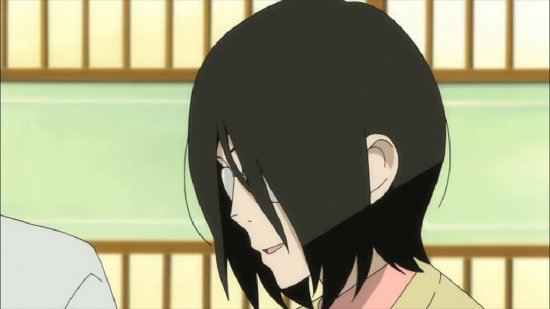
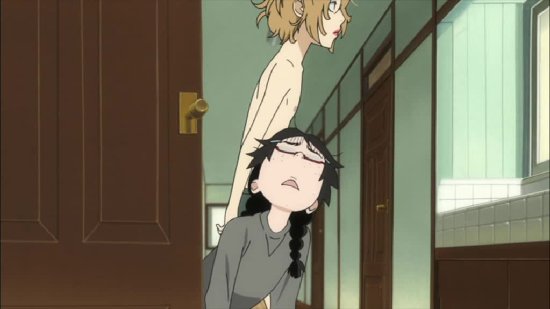
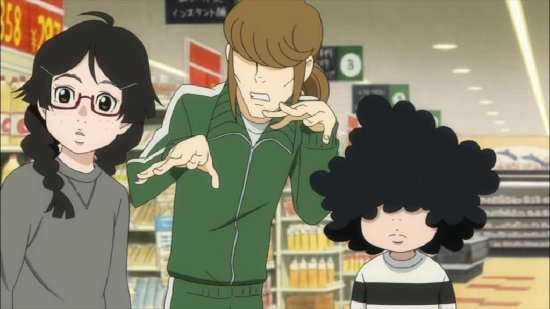



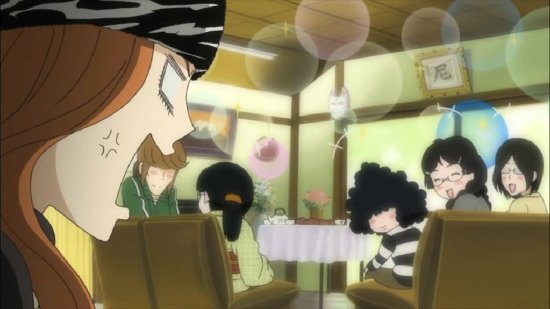
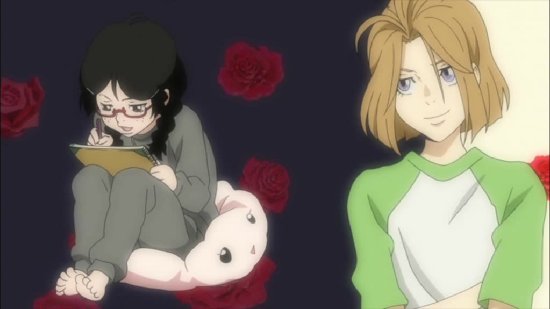
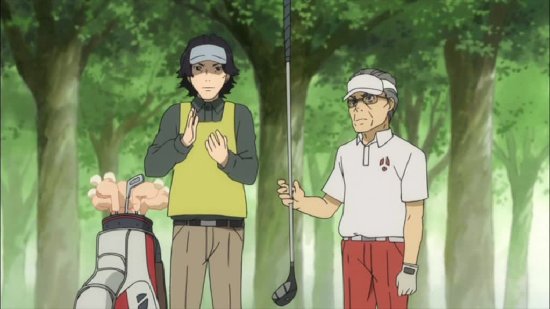
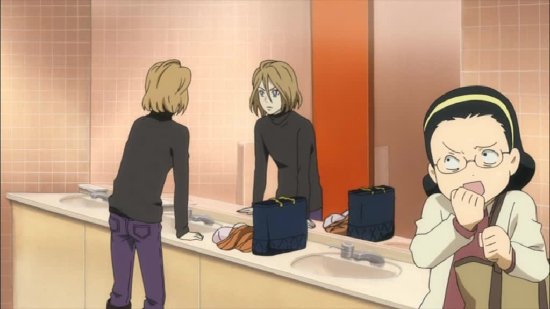
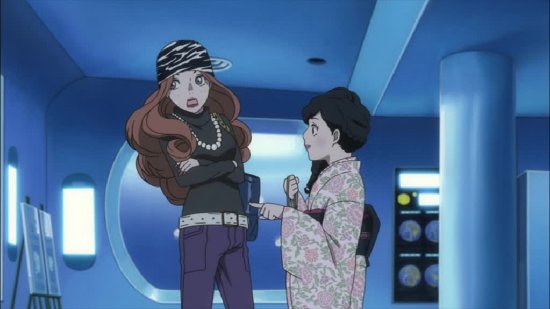
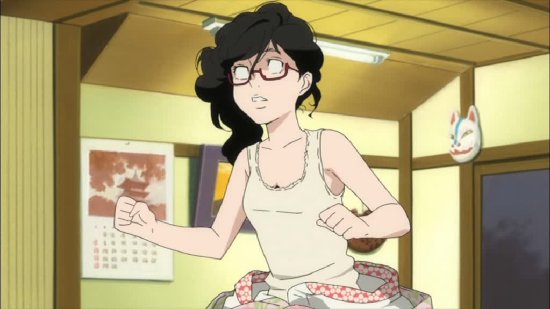
Your Opinions and Comments
The "one line of subtitles at a time" thing is Pièce de résistance of what sounds like a truly shoddy release, but it doesn't surprise me after the flickering subtitles that plagued Samurai Girls. I just don't understand why this keeps happening with certain UK and Australian releases, and why it's considered acceptable. I have never seen this on a US disc, as I very much doubt US fans would tolerate it.
I own the Funimation Blu-ray release and don't recall the issue you mention with Jiji's English dialogue. I'll have to watch it again and see.
I’m crossing my fingers and hoping that an Australian distributor announces a license in the next few months
Ask and you will receive... kind of. Siren Visual seem like the perfect fit for this show in Australia, and I popped off a question to them on Facebook, resulting in the tantalising response...
http://www.facebook.com/sirenvisual/posts/406041809459667